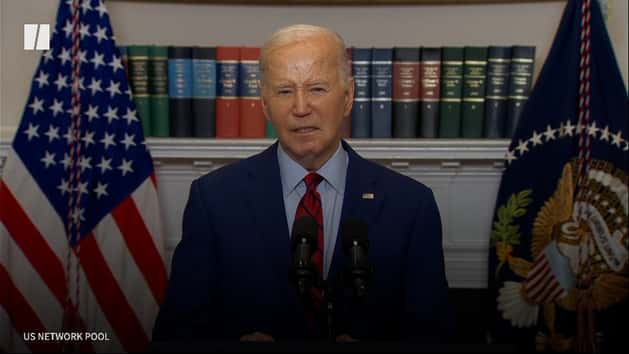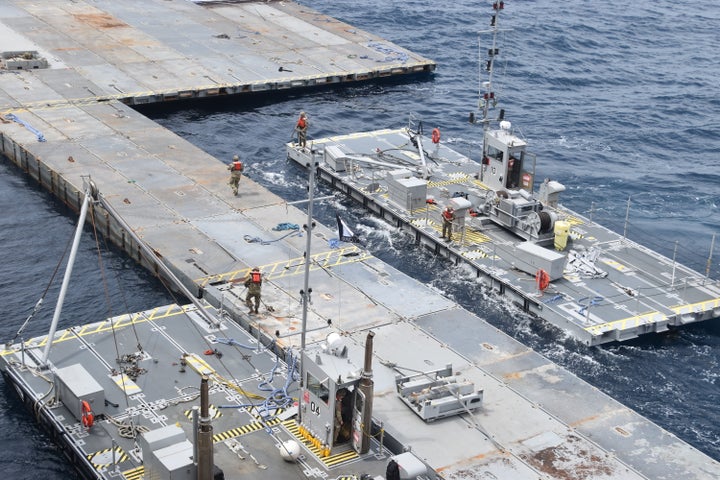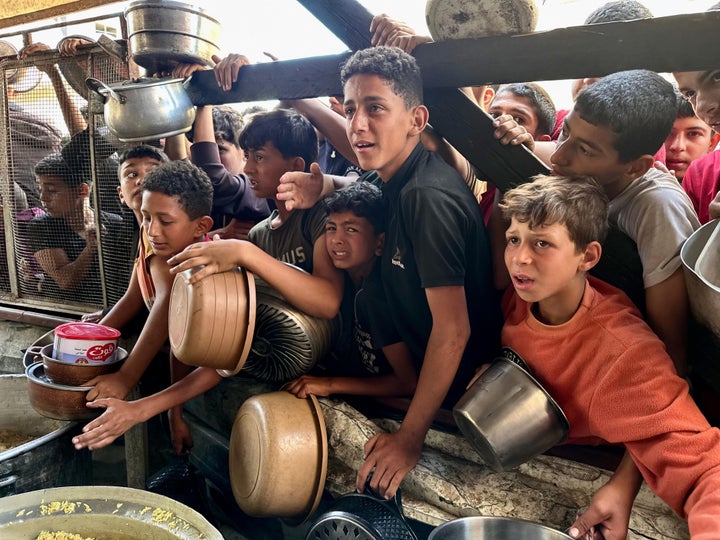Palestinian journalist describes fight to protect his family while covering war in Gaza
On World Press Freedom Day, the Committee to Protect Journalists says some two dozen journalists have been killed so far this year, the vast majority of them dying in Gaza. At least 97 journalists and media workers have been killed in Gaza, Israel and Lebanon since the start of the war. Nick Schifrin has a look at the life of our journalist in Gaza, cameraman and producer Shams Odeh.
Read the Full Transcript
Notice: Transcripts are machine and human generated and lightly edited for accuracy. They may contain errors.
William Brangham:
Today is World Press Freedom Day.
The Committee to Protect Journalists says some two dozen journalists have been killed so far this year, the vast majority of them dying in Gaza. All told, at least 97 journalists and media workers have been killed in Gaza, Israel, and Lebanon since the start of the war, making this by far the deadliest conflict for reporters in recent memory.
So we wanted to give you a look at the life of our own journalist in Gaza, cameraman and producer Shams Odeh. He's been filming in Gaza since the October 7 terrorist attacks.
Here's Nick Schifrin.
Nick Schifrin:
Gaza today is defined by destruction, death and displacement. And Gaza producer and cameraman Shams Odeh has documented and experienced all three.
Shams Odeh, Photographer and Producer: There is a lot of people killed here in this place in Rafah. This is my tent, my bed, and my kitchen.
Nick Schifrin:
Today, this is his canvas home, where the war forced him and his family to flee in December. They live underneath the constant sound of Israeli drones in Emirati tents, part of a tent city in Deir al Balah, one of tens of thousands of displaced families finding a way to live.
Four-year-old Kareem leads a gaggle of grandchildren. The youngest, 1-year-old Rose, sleeps with a prized possession. Their mother, Diana, is Shams' eldest child.
Diana Odeh, Daughter of Shams Odeh: My message to the world is, we are humans. We are not numbers. We deserve to live a better life, such as any person in the world. So we all here evacuated our homes.
Nick Schifrin:
In November, even after an initial displacement, they had a real roof over their heads near Nuseirat. A madhouse of extended cousins lived in a house Shams built himself, with Benjamin Netanyahu's televised speeches and Diana Odeh's deferred dreams.
Diana Odeh:
We here in Gaza suffer, that we need our children to have a better future. I want my kid Kareem to be a doctor in the future, but we don't know if we are going to make until the morning.
Nick Schifrin:
But the children now know things they should never have to know.
Diana Odeh:
My son Kareem even knows if this bomb — if this bomb is dangerous or not. He tells me: "Mom, it's far away. It's far away. It's not beside us."
Nick Schifrin:
But, one day, it was beside them, and Shams' house is now reduced to rubble, where grandkids once played, debris and devastation.
Shams Odeh:
I choose to live here far away from troubles, far away from militant places. I choose this place to live in peace, me and my kids.
Nick Schifrin:
This house was his life's work, his family's safe haven.
Shams Odeh:
My dream was that everyone, Israelis, Palestinians live near each other with peace, with love. And this bloody war must end, must end because of our kids and their kids, for a good future for them. We must teach them how to love each other.
Nick Schifrin:
Love might feel lost in Khan Yunis, once home to half-a-million people, where today houses are flattened like pancakes and apartment blocks are cut into carcasses, including one more Odeh family home.
Shams Odeh:
This is the last home that our — my family owned in all of the Gaza Strip, after destroying my apartment in North Gaza, then my house in Nuseirat camp.
Nick Schifrin:
The Israeli military says it does not target journalists, and blames Hamas for the death of Gaza civilians.
Benjamin Netanyahu, Israeli Prime Minister:
Hamas places its weapons, it's terrorists in hospitals, schools, mosques and throughout civilian areas. They do this in order to win immunity and to maximize civilian casualties.
Nick Schifrin:
As for Shams, he will keep working and trying to protect his family…
Shams Odeh:
They are refugee like me.
Nick Schifrin:
… including the newest members. But he couldn't protect everyone.
Shams Odeh:
They were playing here, spend their life here.
Nick Schifrin:
Thirty-one of his extended family have been killed.
Shams Odeh:
This is Shams Odeh. Journalist Shams Odeh spend his life as a peaceful person. But this is what happened to me.
Hardly, we can find food. Hardly, we can have money. But this will not stop our hope. We love you all, and I will keep love you all.
Nick Schifrin:
For the "PBS NewsHour," I'm Nick Schifrin.










